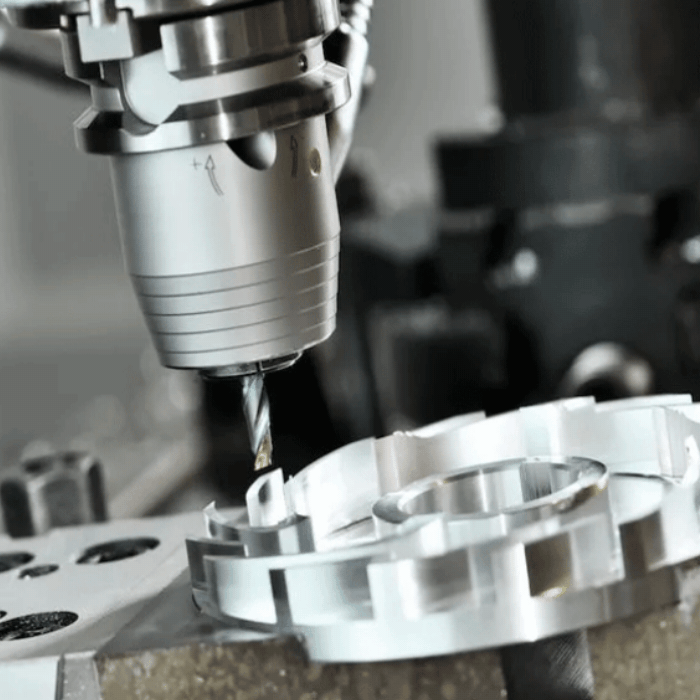The Heat Treatment Process of Machine Parts

In order to make machine parts have the required machine properties, physical properties, and chemical properties, in addition to the reasonable selection of materials and various forming processes, heat treatment processes are often indispensable. According to the different purposes of heat treatment, the heat treatment process can be divided into the following two categories: preliminary heat treatment and final heat treatment.
Preparatory heat treatment
The purpose of preliminary heat treatment is to improve processing performance, eliminate internal stress, and make adequate preparations for final heat treatment
(1) Annealing and normalizing
Annealing and normalizing are used for hot processed blanks. Carbon steel and alloy steel with a carbon content greater than 0.5% are often annealed in order to reduce their hardness and easy to cut; carbon steel and alloy steel with carbon content less than 0.5% are used to avoid sticking to the tool when cutting with a carbon content of less than 0.5%. Instead, normalizing is used. Annealing and normalizing can still refine the grains and uniform structure, preparing for the subsequent heat treatment. Annealing and normalizing are often arranged after the blank is manufactured and before the rough machining.
(2) Aging treatment
The aging treatment is mainly used to eliminate the internal stress generated in blank manufacturing and machining.
In order to avoid excessive transportation workload, for parts with general precision, an aging treatment can be arranged before finishing. However, for parts with higher precision requirements (such as the box of a coordinate boring machine, etc.), two or several aging treatment procedures should be arranged. Simple parts are generally not subject to aging treatment.
In addition to castings, for some precision parts with poor rigidity (such as precision lead screws), in order to eliminate the internal stress generated during machining and stabilize the machining accuracy of the parts, multiple aging treatments are often arranged between rough machining and semi-finish machining. For some shaft parts processing, aging treatment must be arranged after the straightening process.
(3) Tempering
Quenching and tempering is the high-temperature tempering treatment after quenching. It can obtain a uniform and fine tempered sorbate structure to prepare for the reduction of deformation during the subsequent surface quenching and nitriding treatment. Therefore, quenching and tempering can also be used as preliminary heat treatment.
Because of the better comprehensive machine properties of the parts after quenching and tempering, some parts that do not require high hardness and wear resistance can also be used as the final heat-treatment process.
Final heat treatment
The purpose of the final heat treatment is to improve machine properties such as hardness, wear-resistance, and strength.
(1) Quenching
Quenching includes surface quenching and overall quenching. Among them, surface quenching is widely used because of small deformation, oxidation, and decarburization, and surface quenching also has the advantages of high external strength and good wear resistance, while maintaining good internal toughness and strong impact resistance.
In order to improve the machine properties of surface hardened parts, heat treatment such as quenching and tempering or normalizing is often required as preliminary heat treatment.
The general process route is blanking-forging-normalizing (annealing)-rough machining-quenching and tempering-semi-finishing-surface quenching-finishing.
(2) Carburizing and quenching
Carburizing and quenching are suitable for low-carbon steel and low-alloy steel. First, increase the carbon content of the surface of the part. After quenching, the surface can obtain high hardness, while the core still maintains a certain strength and high toughness and plasticity.
Carburizing is divided into overall carburizing and partial carburizing. In the case of partial carburizing, anti-seepage measures (copper plating or anti-seepage material plating) should be taken for the non-carburized part. Since the carburizing and quenching deformation is large, and the carburizing depth is generally between 0.5 and 2mm, the carburizing process is generally arranged between semi-finishing and finishing.
The process route is generally: blanking-forging-normalizing-rough and semi-finishing-carburizing and quenching-finishing.
When the non-carburized part of the partial carburized part adopts the process plan of removing the excess carburized layer after increasing the margin, the process of removing the excess carburized layer should be arranged after carburizing and before quenching.
(3) Nitriding treatment
Nitriding is a treatment method that allows nitrogen atoms to penetrate into the metal surface to obtain a layer of nitrogen-containing compounds. The nitriding layer can improve the hardness, wear resistance, fatigue strength, and corrosion resistance of the surface of the part.
Since the nitriding treatment temperature is low, the deformation is small, and the nitriding layer is thin (generally no more than 0.6~0.7mm), the nitriding process should be arranged as far back as possible. In order to reduce the deformation during nitriding, it is generally required after cutting. Perform stress-relieving high-temperature tempering.
The effect of heat treatment on machine parts is to improve the mechanical properties of the parts, eliminate residual stress and improve the machinability of metals. If you want to know more about machine parts after reading the above, you can get professional solutions by contacting us.
As a professional parts supplier, we have accumulated many years of design and production experience in this field. We have an experienced production team and a strict quality inspection system, which can control the quality of our products in an all-round way. At the same time, we will also provide thoughtful one-stop service according to the actual needs of customers. If you are interested in our machine parts, please contact us immediately!


